Fixed Orthodontic Retainers
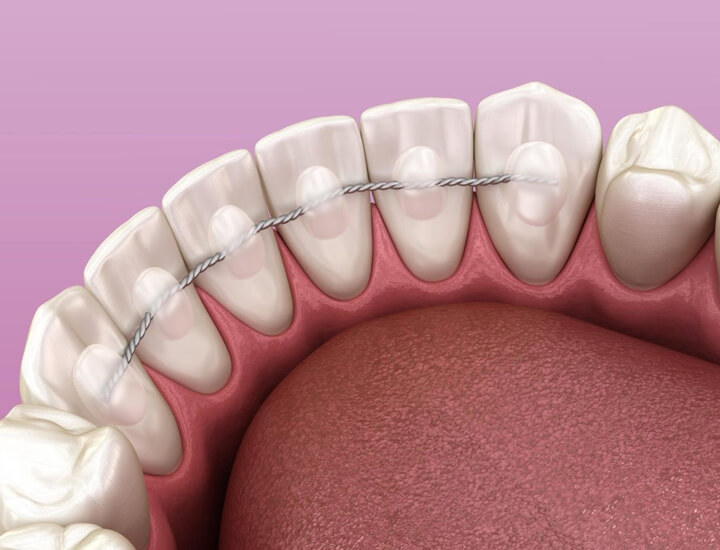
What Are Fixed Orthodontic Retainers?
After undergoing braces or other orthodontic procedures to align teeth, it’s essential to maintain the results and preserve the progress made during treatment. This is where Fixed Orthodontic Retainers come into the picture.
Fixed Orthodontic Retainers, also referred to as lingual wires, are permanently bonded to the back surfaces of your front teeth, providing a discreet and long-term solution for maintaining the new alignment. These retainers are custom-made for each patient to ensure a precise fit, allowing patients to retain their beautiful smile without drawing attention to the retainer itself. Before you deciding on whether Fixed Orthodontic Retainers are right for you, there are some things you should know:
- Who Needs Fixed Orthodontic Retainers?
- What Are The Advantages Of Fixed Orthodontic Retainers?
- What Are The Alternative Treatments If I Do Not Choose Fixed Orthodontic Retainers?
- How Much Does Fixed Orthodontic Retainers Cost?
- What Are The Steps In The Fixed Orthodontic Retainers Procedure?
- Can I Have Fixed Orthodontic Retainers If I Am Pregnant?
- What Are Common Problems with Fixed Orthodontic Retainers?
If you have any further questions about Fixed Orthodontic Retainers or other dental services offered at Atlas Dental, please contact us.

Free phone consultation
Have questions about Fixed Retainers? Schedule a free phone consultation with our Toronto dentist.

5 star google reviews
Our patients love us! See for yourself why more and more people are choosing Atlas Dental for their Fixed Retainers.

Fixed Retainer Emergency
We provide quick and convenient fixed retainer repair and treatment in Toronto. Book Online.
Who Needs Fixed Orthodontic Retainers?
Fixed orthodontic retainers are a valuable tool in the realm of orthodontics, and they serve a vital role in helping patients maintain the results of their orthodontic treatment. After investing time, effort, and resources into achieving a beautifully aligned smile, it’s essential to understand who can benefit from lingual wire retainers and why they may be necessary.
- Post-Braces Patients: The most common recipients of fixed orthodontic retainers are individuals who have completed their braces or orthodontic treatment successfully. Whether you had traditional braces, Invisalign clear aligners, or any other orthodontic system, the teeth are gradually moved into their desired positions during treatment. However, after the braces come off, the teeth may have a tendency to shift back to their original misaligned positions. Fixed retainers are employed to counteract this natural tendency, preserving the alignment achieved during the active treatment phase.
- Crowded or Misaligned Teeth: Even individuals who did not undergo traditional braces can benefit from fixed orthodontic retainers if they have experienced issues with crowded or misaligned teeth. In some cases, orthodontists may recommend fixed retainers to maintain minor corrections or align teeth that had minor crowding issues, providing a stable, long-term solution for preserving the new alignment.
- Bite Irregularities: Apart from addressing the position of individual teeth, fixed orthodontic retainers can also play a role in stabilizing the bite. If your orthodontic treatment involved correcting bite issues such as overbites, underbites, or crossbites, fixed retainers can help maintain the corrected bite relationship, ensuring the teeth and jaws continue to function harmoniously.
- Patients Prone to Teeth Shifting: Each person’s mouth is unique, and factors like genetics and age can contribute to the likelihood of teeth shifting over time. Some individuals have a higher risk of teeth moving out of alignment, even after orthodontic treatment. In such cases, orthodontists may recommend fixed retainers as a preventive measure to reduce the chances of significant shifting and the need for future orthodontic corrections.
- Patients with Compliance Concerns: Removable retainers require a certain level of responsibility and compliance from the patient. Some individuals may struggle to consistently wear removable retainers as instructed, leading to potential setbacks in their orthodontic progress. Lingual wire retainers eliminate this issue as they are permanently affixed to the teeth, ensuring 24/7 retention without the need for patient intervention.
Remember, the decision to use fixed orthodontic retainers will be based on individual needs and recommendations from an experienced orthodontist. Regular dental check-ups will also allow your orthodontist to monitor the condition of the retainers and make any necessary adjustments, ensuring the best long-term outcome for your beautiful smile. If you have further questions about Fixed Orthodontic Retainers, please contact us.
What Are The Advantages Of Fixed Orthodontic Retainers?
Fixed orthodontic retainers offer several compelling advantages that make them a preferred choice for many individuals seeking a reliable and discreet solution to maintain the results of their orthodontic treatment. Let’s explore the key benefits of opting for fixed retainers:
- Continuous Retention: One of the most significant advantages of fixed orthodontic retainers is their continuous retention. Unlike removable retainers, which rely on the patient to wear them consistently, fixed retainers remain bonded to the teeth at all times. This ensures that the teeth are held in their proper positions 24/7, reducing the risk of undesirable shifting and maintaining the alignment achieved through braces or other orthodontic treatments.
- Invisibility: Lingual wire retainers are placed on the back surfaces of the teeth, making them virtually invisible to others. This discreet placement allows patients to maintain their natural smile without feeling self-conscious about a noticeable retainer. Whether you’re at work, socializing, or posing for pictures, the fixed retainer remains hidden from view.
- Comfort and Convenience: Once the fixed orthodontic retainer is in place, patients often find it comfortable and unobtrusive. There’s no need to remove and reinsert the retainer during meals or other activities, which can be a hassle with removable options. The retainer becomes a seamless part of the teeth, allowing for normal speaking, eating, and oral hygiene routines.
- Effective for Long-Term Retention: Fixed retainers are designed to provide stable and long-term retention. As long as the retainer remains intact and well-maintained, it can prevent significant teeth shifting for many years. This minimizes the likelihood of requiring additional orthodontic treatment in the future.
- No Compliance Concerns: Compliance is a crucial factor with removable retainers. Some patients may struggle to wear removable retainers consistently, which could compromise the results of their orthodontic treatment. With fixed retainers, there’s no need to worry about remembering to wear the appliance as it remains permanently attached, providing peace of mind for both patients and orthodontists.
- Preserves Corrected Bite: Fixed orthodontic retainers not only maintain the alignment of individual teeth but also play a role in preserving the corrected bite relationship achieved during orthodontic treatment. This ensures that the teeth and jaws continue to function harmoniously, reducing the risk of bite-related issues reemerging over time.
- Customized for Optimal Results: Each fixed orthodontic retainer is custom-made to fit the unique contours of a patient’s teeth. Orthodontists carefully plan and design these retainers to provide optimal retention, ensuring that the teeth remain securely in their corrected positions.
It’s important to note that while fixed orthodontic retainers offer numerous advantages, they are not suitable for every orthodontic case. Your orthodontist will evaluate your specific dental situation and provide personalized recommendations for the most appropriate type of retainer based on your needs and treatment history. If you have further questions about Fixed Orthodontic Retainers, please contact us.
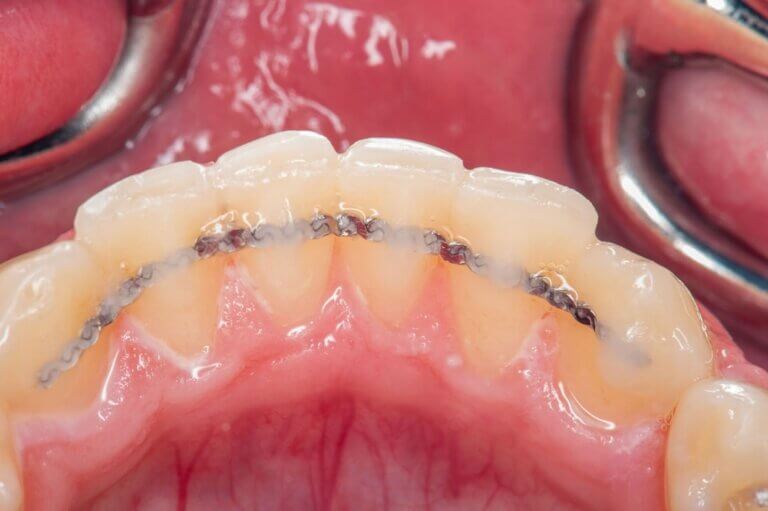
What Are The Alternative Treatments If I Do Not Choose Fixed Orthodontic Retainers?
While fixed orthodontic retainers offer a range of benefits for maintaining the results of orthodontic treatment, they may not be the ideal choice for everyone. Some individuals may prefer or require alternative treatments to preserve their newly aligned smile. Let’s explore the alternative options available if you decide not to choose fixed orthodontic retainers:
- Removable Retainers: One of the most common alternatives to lingual wire retainers is opting for removable retainers. These are custom-made appliances that fit over the teeth and are typically made from clear plastic or acrylic materials. Removable retainers need to be worn as directed by your orthodontist, usually during the day and at night while sleeping. They are removed during meals and when brushing and flossing.
- Invisalign Clear Aligners: Clear aligners, such as Invisalign, have gained popularity as an alternative to both braces and fixed retainers. These aligners are a series of custom-made, transparent trays that gradually shift the teeth into their desired positions. While clear aligners can correct mild to moderate misalignments, they also function as retainers after the active treatment phase. In many cases, patients may choose to continue wearing their last set of aligners as retainers, as they offer some degree of retention.
- Hawley Retainers: Hawley retainers are another type of removable retainer that consists of a plastic arch that fits snugly against the roof of the mouth or the tongue-side of the teeth. The retainer also incorporates a wire that runs across the front of the teeth to hold them in place. Hawley retainers are adjustable, allowing for minor corrections if needed.
- Essix Retainers: Similar to Invisalign aligners, Essix retainers are transparent and fit over the teeth. They are made from a durable plastic material and are nearly invisible when worn. Essix retainers are less noticeable than Hawley retainers, but like other removable retainers, they require diligent compliance from the patient to ensure effective retention.
- Observation without Retainers: In some cases where the teeth have been successfully aligned and there are minimal chances of significant shifting, the orthodontist may decide to monitor the teeth without any form of retainer. This approach is usually reserved for individuals with very stable orthodontic results and a low risk of relapse.
It’s crucial to consult with your orthodontist before deciding on an alternative treatment or foregoing retainers altogether. Each individual’s orthodontic needs and stability after active treatment differ, and the appropriate option will be determined based on the specific circumstances. If you have further questions about Fixed Orthodontic Retainers, please contact us.
Cost Of Fixed Retainers
Patients often choose between Removable Clear Essix Retainers or Cemented Lingual Wire Retainers. These retainers can be made for the top (maxillary) or bottom (mandibular). The cost of fixed retainers by a general dentist generally cost $275 per arch. The codes relevant to fixed orthodontic retainers in the Ontario Dental Association’s Suggested Fee Guide appear as follows:
Appliances, Fixed/Cemented, Retention
- 83201 Appliances, Fixed/Cemented Retention, Maxillary – $275.00
- 83202 Appliances, Fixed/Cemented Retention, Mandibular – $275.00
These fees may be covered by dental insurance plans, but it is important to check with your insurance provider to determine your specific coverage. It is also worth noting that the ODA Fee Guide is a guideline and not a mandatory fee schedule, so dentists and orthodontists may charge more or less than the listed fees depending on their individual practices. At Atlas Dental, we follow the fee guide for fixed retainers.
For patients without dental insurance, Atlas Dental is pleased to offer dental financing through Dentalcard. Affordable payment plans start at 7.95% for terms of 6 months to 6 years. To learn more about Dentalcard dental treatment financing, follow this link.
What Are The Steps In The Fixed Orthodontic Retainers Procedure?
The process of getting fixed orthodontic retainers involves several essential steps, all aimed at ensuring the retainer is custom-made to fit your teeth and provides optimal retention. If your orthodontist recommends fixed retainers as part of your post-treatment plan, here are the typical steps involved in the procedure:
- Consultation and Evaluation: The first step is to schedule a consultation with your orthodontist. During this appointment, the orthodontist will evaluate your current oral health, review your orthodontic treatment history, and assess the alignment of your teeth after active treatment. They will determine whether fixed orthodontic retainers are the most suitable option for maintaining your results. Please review these pre-visit instructions before your visit.
- Customized Retainer Design: If fixed orthodontic retainers are recommended, the orthodontist will take detailed impressions or digital scans of your teeth. These impressions or scans serve as the basis for creating a custom-designed retainer that precisely matches the contours of your teeth.
- Placement Appointment: Once your fixed retainers have been fabricated, you will return to the orthodontist’s office for the placement appointment. During this visit, the orthodontist will bond the retainers to the back surfaces of the selected teeth. The bonding process involves applying a dental adhesive to the retainer and then carefully attaching it to the teeth.
- Curing the Adhesive: After the retainers are in place, a special curing light is used to harden and set the dental adhesive. This ensures a strong and durable bond between the retainers and the teeth.
- Adjustments and Checks: The orthodontist will make any necessary adjustments to ensure the retainers fit comfortably and securely. They will check your bite and how your teeth come together to ensure the retainers do not interfere with your natural bite function.
- Oral Hygiene and Care Instructions: Your orthodontist will provide you with detailed post-insertion instructions on how to care for your lingual wire retainers. This typically includes guidance on oral hygiene practices, such as brushing and flossing, to maintain good dental health while wearing the retainers.
- Follow-Up Visits: Regular follow-up visits with your orthodontist are crucial to monitor the condition of the fixed retainers and evaluate the stability of your orthodontic results. These appointments allow your orthodontist to make any necessary adjustments and address any concerns you may have.
- Long-Term Maintenance: With proper care and maintenance, fixed orthodontic retainers can provide stable retention for an extended period. However, they are not meant to last forever. Over time, retainers may need replacement or repair, and your orthodontist will advise you on when it’s time for any necessary changes.
Following the completion of the fixed orthodontic retainers procedure, you can enjoy the benefits of a well-maintained and beautifully aligned smile. Remember to maintain regular dental check-ups and adhere to your orthodontist’s recommendations for long-term success. If you have further questions about Fixed Orthodontic Retainers, please contact us.
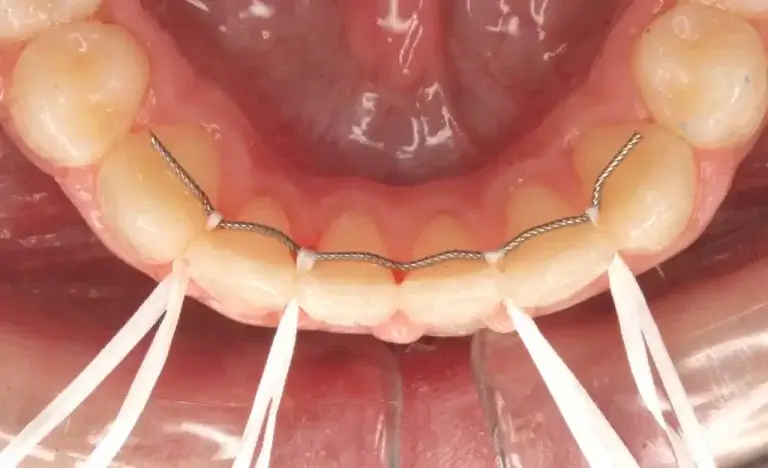
Can I Have Fixed Orthodontic Retainers If I Am Pregnant?
Pregnancy is a special time in a woman’s life, and it often comes with various questions about what is safe and appropriate during this period. If you are pregnant or planning to become pregnant and have questions about fixed orthodontic retainers, read on to understand the considerations and potential options:
- Safety Concerns: Fixed orthodontic retainers are generally considered safe for most individuals, including pregnant women. The procedure for getting fixed retainers does not involve any harmful substances or radiation. The dental adhesive used to bond the retainers is typically safe for use, but it’s essential to inform your orthodontist and dentist about your pregnancy before any dental treatment.
- Timing of the Procedure: If you already have lingual wire retainers in place before becoming pregnant, there is usually no need for any changes or removal during pregnancy. Fixed retainers are non-invasive and do not interfere with pregnancy or childbirth.
- Communication with Healthcare Providers: During pregnancy, it’s crucial to keep all your healthcare providers informed about any dental treatments you may undergo. This includes your obstetrician, orthodontist, and dentist. While the placement or maintenance of fixed orthodontic retainers is generally safe during pregnancy, it’s essential for your healthcare team to be aware of all aspects of your health.
- Considerations for New Procedures: If you are considering getting fixed orthodontic retainers for the first time and are pregnant or planning to become pregnant, it’s advisable to discuss this with your orthodontist and obstetrician. They can collaborate to determine the best course of action based on your individual circumstances and the stage of your pregnancy.
- Stress and Discomfort: Pregnancy can be a time of heightened sensitivity, and some women may experience increased stress or discomfort during dental procedures. If you have any concerns or anxiety about getting fixed retainers during pregnancy, do not hesitate to share your feelings with your orthodontist. They can offer reassurance and help ensure your comfort during the procedure.
- Alternative Timing: If you prefer to wait until after childbirth to undergo any dental procedures, including getting fixed orthodontic retainers, you can discuss postponing the treatment with your orthodontist. They can work with you to develop a suitable plan that aligns with your pregnancy timeline.
Fixed orthodontic retainers can typically be considered safe during pregnancy, especially if you already have them in place. However, it’s essential to communicate with your orthodontist and other healthcare providers about your pregnancy status and any concerns you may have. They can guide you through the decision-making process and ensure that your orthodontic treatment aligns with your overall health and well-being during this special time. If you have further questions about Fixed Orthodontic Retainers, please contact us.
What Are Common Problems with Fixed Orthodontic Retainers?
While fixed orthodontic retainers are highly effective in maintaining the alignment of teeth, like any dental appliance, they can encounter certain issues over time. Understanding these potential problems can help you recognize them early and seek timely assistance from your orthodontist. Here are some common problems that may arise with fixed orthodontic retainers:
- Bonding Failure: In some cases, the dental adhesive used to bond the retainer to the teeth may fail, leading to the retainer becoming loose or detaching from the teeth. This can happen due to wear and tear over time or if the retainer experiences excessive force, such as biting into hard or sticky foods.
- Wire Distortion or Breakage: The thin wire used in fixed retainers can sometimes become distorted or break due to various factors, such as accidental trauma or biting on objects that put undue stress on the retainer.
- Tartar and Plaque Buildup: Fixed orthodontic retainers create small spaces between the wire and the back surfaces of the teeth. These spaces can be challenging to clean thoroughly, and as a result, plaque and tartar may accumulate over time, increasing the risk of dental issues such as tooth decay and gum disease.
- Speech Impediment: In some cases, especially during the initial days of wearing the retainer, individuals may experience a slight speech impediment due to the presence of the retainer on the back surfaces of the teeth. This is usually temporary and improves as the tongue adapts to the new appliance.
- Gum Irritation: Some individuals may experience mild gum irritation or soreness when the fixed retainer is first placed or adjusted. This usually subsides quickly, but if the irritation persists, it’s essential to consult your orthodontist.
- Challenges with Flossing: Flossing around lingual wire retainers can be more difficult compared to flossing around natural teeth. Special floss threaders or interdental brushes may be recommended to effectively clean between the teeth and the retainer wire.
- Teeth Shifting: In rare cases, fixed orthodontic retainers may not be able to prevent teeth from shifting, especially if there are significant changes in the bite or if there are issues with the retainer’s integrity. Regular dental check-ups are essential to monitor the stability of your orthodontic results.
- Cosmetic Wear or Damage: Over time, fixed orthodontic retainers may show signs of cosmetic wear, such as discoloration or chipping. Although this does not impact the retainer’s function, some individuals may prefer to have them replaced for aesthetic reasons.
If you experience any issues or discomfort with your fixed orthodontic retainers, it’s crucial to contact your orthodontist promptly. Regular follow-up visits and professional maintenance are essential to ensure the retainers continue to function effectively and that your orthodontic results remain stable over the long term. If you have further questions about Fixed Orthodontic Retainers, please contact us.
We also think you’ll like…
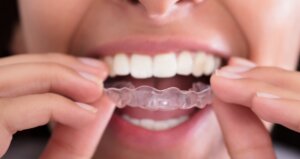
Removable Orthodontic Retainers
Removable Orthodontic Retainers What Are Removable Orthodontic Retainers? Whether you’ve had braces or Invisalign clear aligners, achieving that beautiful, straight smile is an exciting achievement.

Removable Retainer Post-Insertion Instructions
Removable Retainer Post-Insertion Instructions What You Should Do After Receiving Your Removable Retainers Removable retainers are made of a clear, plastic tray that fits over
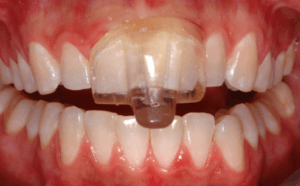
NTI Night Guard
NTI Night Guard What Is An NTI Night Guard? Do you often wake up with headaches, jaw pain, or notice signs of teeth grinding? If
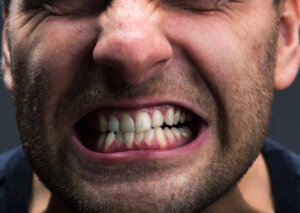
Dentists see pandemic stress in patients with more teeth grinding, bruxism, damaged teeth
Dentists see more teeth grinding pandemic stress in patients Teeth Grinding Caused By COVID-19 Anxiety Has the COVID-19 pandemic been causing you stress? So much

Bruxism
Bruxism What Is Bruxism/Teeth Grinding? Bruxism, also known as teeth grinding, is a condition that affects millions of people worldwide. It is a disorder in
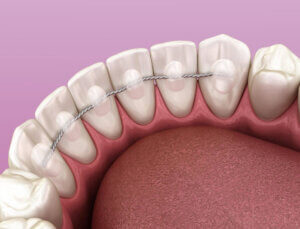
Loose Permanent Retainer
Loose Permanent Retainer What Is A Loose Permanent Retainer? A permanent orthodontic retainer, also known as a lingual wire or fixed retainer, is a thin

